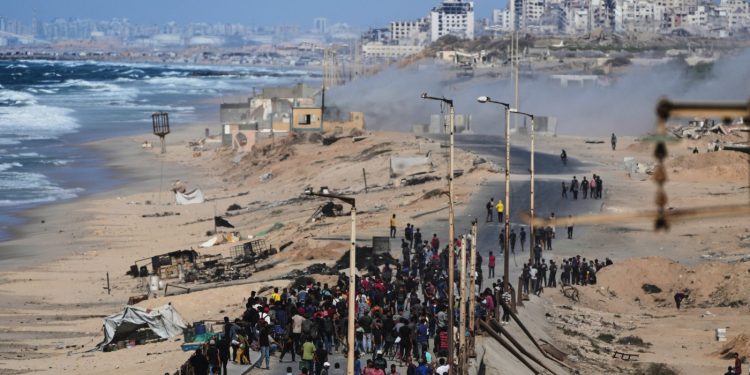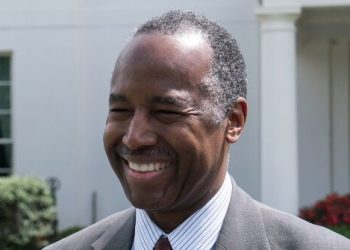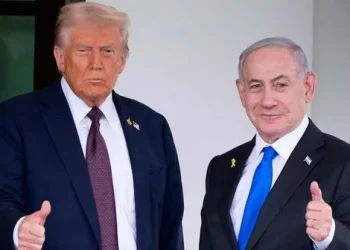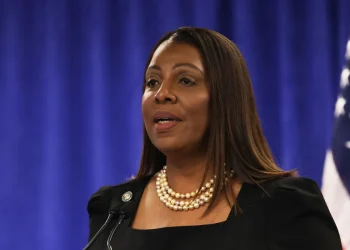
Displaced Palestinians gather on the coastal road near Wadi Gaza following the announcement that Israel and Hamas have agreed to the first phase of a peace plan to suspend fighting, as Israeli tanks block the road leading to Gaza City in the central Gaza Strip, Thursday, October 9, 2025.
Abdel Karim Hana/AP
hide caption
toggle caption
Abdel Karim Hana/AP
Israel and Hamas have reached an agreement for the “first phase” of a plan promoted by President Donald Trump to end the devastating conflict in Gaza.
The initiative begins with a ceasefire that is expected to come into effect after the Israeli Cabinet votes on the truce agreement reached with Hamas following indirect talks in the Egyptian resort town of Sharm el-Sheikh. The Cabinet vote to approve the deal is expected on Thursday.

Here’s what to expect once Israel’s cabinet approves the deal, according to a person briefed by Egyptian officials close to the talks and who was not authorized to speak publicly. NPR has also seen a copy of the deal that Israel’s cabinet is voting on.
- Thursday evening or Friday, a ceasefire comes into effect. (This must begin within 24 hours of Israeli Cabinet approval).
- Also on Thursday evening or Friday, within 24 hours of Israeli cabinet approval, Israel begins withdrawing its troops from parts of Gaza to an agreed line.
- After this 24-hour period, Hamas then has 72 hours to free the 20 hostages still alive. President Trump says it could happen Monday or Tuesday.
- As the hostages are freed, Israel begins releasing some 2,000 Palestinian prisoners.
- Twenty-eight other hostages are presumed dead and Hamas says recovering their bodies – some of which lie under the rubble of destroyed buildings – will take much longer.
- By Monday, hundreds of humanitarian aid trucks are expected to be allowed into Gaza. Tom Fletcher, the U.N. humanitarian affairs chief, told reporters that officials had 170,000 tons of medicine, aid and other supplies ready to send to Gaza once they were given the green light.
President Trump said he planned to visit the region and that the White House was “working on the schedule.” Trump says he plans to travel to Egypt for an “official signing.” He was also invited to speak before the Israeli parliament.
But this remains a delicate moment where many things could still go wrong. For example, Reuters reports that the list of Palestinian prisoners that Israel will release is still under debate.
Achieving lasting peace could prove even more difficult. The next phases of President Trump’s 20-point plan require new negotiations on key issues, including the fate of Hamas and who will rule Gaza when the fighting ends.

Here are some of the key points of the plan:
- It demands that Gaza be initially governed by a temporary committee of technocrats, including “qualified Palestinians and international experts” tasked with managing public services in Gaza. It says this body will be overseen by a new international transition body called the Peace Council, which will be led and chaired by Trump.
- Palestinians must be allowed to remain in Gaza and “those who wish to leave will be free to do so and free to return.” The plan says: “We will encourage people to stay and offer them the opportunity to build a better Gaza.”
- Hamas and allied factions renounce any role in the governance of Gaza and agree to disarm, handing over weapons as part of a decommissioning process overseen by “independent” observers.
- A temporary “International Stabilization Force” organized by the United States with Arab and other countries would be “immediately deployed” to Gaza. The force would train “approved Palestinian police forces” and act longer term as an internal security force – and play a role in securing border areas with Israel and Egypt.
- Israel will not occupy or annex Gaza. The Israeli army should gradually and completely withdraw from Gaza “except for a presence on a security perimeter”.
- The plan includes a provision to create “a credible path to self-determination and the creation of a Palestinian state, which we recognize as the aspiration of the Palestinian people.”
Hamas has repeatedly rejected Israel’s call for disarmament, and after the plan was announced, Israeli Prime Minister Benjamin Netanyahu publicly stated that Israel had not accepted a Palestinian state.

And President Trump’s proposed “Peace Council” sparked controversy for giving a role to former British Prime Minister Tony Blair. Blair is widely vilified – particularly in the Middle East for deciding that Britain should join the US-led invasion of Iraq in 2003. Blair’s think tank has also been criticized for leaking plans to turn Gaza into a “Trump Riviera”.
Getting both parties to agree to all these conditions remains a complicated prospect. And even once a peace deal has been negotiated, applying it to the reality of a broken Gaza – where entire areas have been reduced to rubble by airstrikes and bulldozers, and where the population is traumatized by a conflict that has constrained the vast majority – will perhaps be an even greater challenge.
NPR’s Aya Batrawy contributed to this report from Dubai. Itay Stern contributed from Tel Aviv. Michele Kelemen contributed from Washington, D.C.









